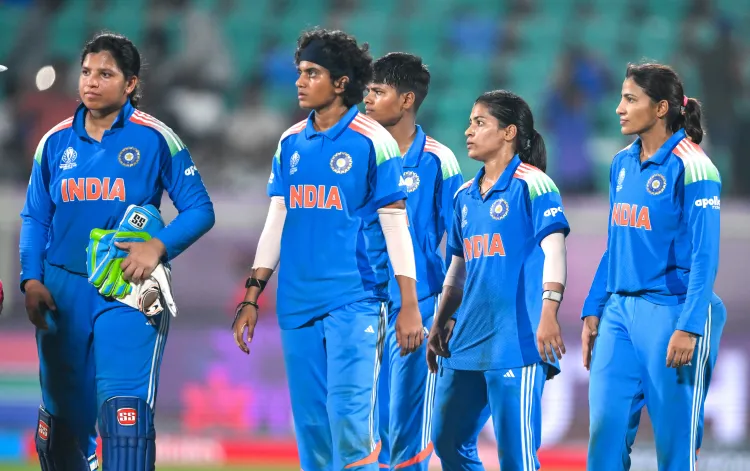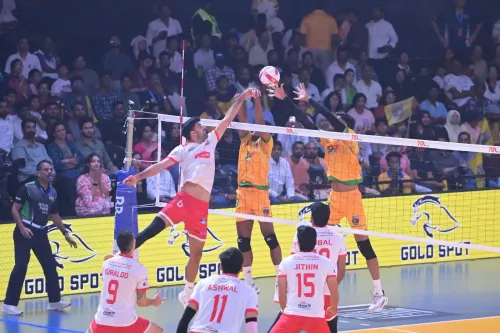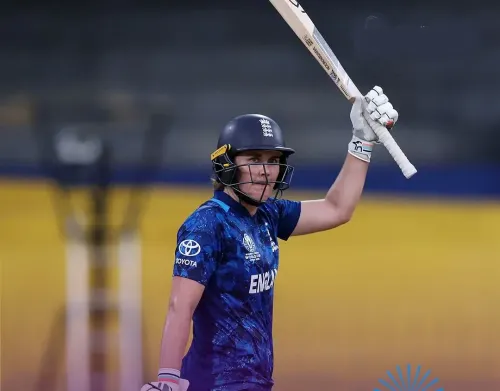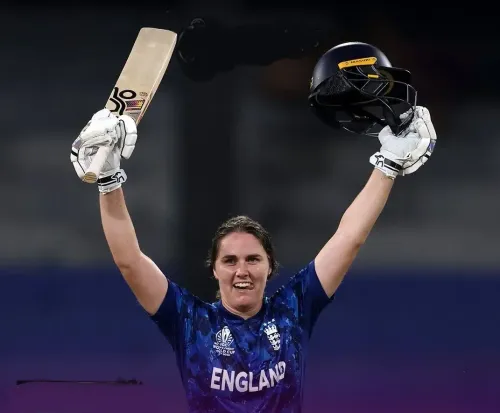Did India Underestimate South Africa’s Match-Winners?

Synopsis
Key Takeaways
- Recognizing Opposition Strengths: India must acknowledge the match-winners in opposing teams.
- Bowling Depth: A sixth bowling option is essential for better performance.
- Middle Order Resilience: Players like Richa Ghosh showed promise but need support from the entire batting lineup.
- Pressure Performance: The Indian team must prove its capability to handle pressure in crucial matches.
- Strategic Adaptation: India must adapt to conditions and find effective bowling combinations.
Vishakhapatnam, Oct 10 (NationPress) Former India captain and cricket analyst Anjum Chopra shared insights on India's weaknesses following their recent Women's World Cup match against South Africa, where the Proteas delivered the Women in Blue their first tournament loss in a nail-biting encounter. She noted that the Harmanpreet Kaur-led squad did not fully recognize that the opposing team also boasted match-winners.
Anjum praised Nadine de Klerk for her composed performance, where she took control during critical moments, leading her team to a thrilling victory. While Richa Ghosh anchored India's innings with steady batting, de Klerk's unbeaten 84 was pivotal in South Africa's success.
Chopra highlighted India's performance, particularly the resilience of the middle order, including Richa's contributions. She stressed the necessity for diversifying bowling options and learning valuable lessons to enhance future performances in the tournament.
“Nadine de Klerk showcased her true capabilities. Often underestimated in South African and global cricket, she's seen merely as a bowler or a supporting batter but proved to be a significant match-winner. Her innings will draw attention. Coming in at number eight, she displayed the poise required to finish games effectively. That’s a substantial takeaway for world cricket,” Anjum remarked.
“For India, the positive aspect was the effort from Richa Ghosh and the middle order, including Sneh Rana, who rose to the occasion once more. They exhibited intent and composure, demonstrating that the middle and lower orders are ready to take charge. During bowling, they appeared synchronized with the situation, understanding the importance of every run. However, at some point, that intensity waned, possibly underestimating the opposition's match-winning capabilities and batting depth, akin to India's,” Anjum stated on JioHotstar.
India's bowling unit once again excelled, applying pressure on the Proteas by securing early wickets. Although South Africa's prospects seemed dim at the beginning of their chase, de Klerk's exceptional performance altered the game's trajectory. Reflecting on India's bowling unit, Anjum said:
“The tall batting order we frequently discuss, capable of tackling significant targets, must now demonstrate its mettle under pressure, just as South Africa did with Laura Wolvaardt, Chloe Tryon, and Nadine de Klerk. Similar conditions will reappear in Vizag, Indore, and Mumbai. The focus is on how India adjusts and identifies the right bowling combinations to respond,” Anjum remarked.
India's lack of a sixth bowling option was evident, leading skipper Harmanpreet Kaur to bowl four overs during the match. Despite conceding only 15 runs without taking a wicket, this decision raised further concerns about India's bowling depth.
“A sixth bowler is essential; this has been clear for the past two years. The Indian team has struggled with just four bowlers and only recently managed to include a fifth, which is insufficient. It’s unrealistic to rely solely on five bowlers in every situation. Now, despite having six or seven batters, India is still not consistently reaching 250–280 runs and faces frequent batting collapses.
“The management must make difficult decisions, whether it involves sacrificing an opener, a number three, or a number five for a bowler. Even with a deep batting order, when a player like Richa Ghosh bats at number eight, it highlights that several batters are not performing consistently. It’s time to decisively enhance at least one area,” she concluded.









